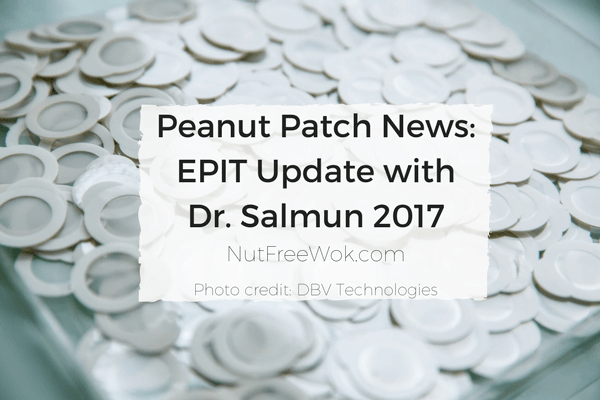
Peanut Patch News: EPIT Update with Dr. Salmun 2017
There have been a lot of peanut patch news in the last few weeks after the 2017 AAAAI meeting in Atlanta. I’m thrilled to share with you about a couple of conversations that I had with Dr. Luis Salmun, Senior Vice President, Global Medical Affairs at DBV Technologies (DBV).
Dr. Luis Salmun was very kind to speak with me shortly after I published my previous interview with him to follow up on a few remaining questions and I’ve included that update below. We spoke again recently to discuss DBV’s presentations at AAAAI in Atlanta, including what they’ve learned at the conclusion of Viaskin Peanut’s open label extension phase 2 trial, OLFUS-VIPES. If Viaskin Peanut (aka peanut patch) is new to you, be sure to read my first interview with Dr. Henri Benhamou, the CEO of DBV and my child’s experience in a peanut patch clinical trial.
Disclaimer: It’s my pleasure and honor to be able to speak with Dr. Salmun and their representatives from DBV and be able to share with you what I learn. I am not a medical professional, the contents of this article should be considered for information only and not medical advice. Please consult with your own medical professionals if you have specific questions. DBV’s Viaskin products are still under clinical trial investigation and is considered by the FDA as a breakthrough therapy not yet approved. We talked by phone twice and it’s difficult to transcribe all of our conversations so I took notes and followed up via emails and made minor edits for clarity and accuracy. I’ve summarized our conversations below and referred to other resources as noted. This post is also not sponsored and all opinions are my own. Photos are courtesy of DBV Technologies.
EPIT Update From The Last Q&A with Dr. Salmun
How will doctors monitor a patient’s progress during treatment?
It’s too early to make any conclusions as they are working on their proprietary algorithm, which is under consideration as a monitoring tool. The phase 2 Viaskin Peanut trial data results have been invaluable to their research because it allows them to gather data to develop and evaluate their proprietary algorithm. The current phase 3 Viaskin Peanut trial data will help them strengthen their model of what will happen after 12 months of treatment and predict the outcome of a food challenge.
The data from ongoing phase 3 trials are used to compare the progress of the patients in the treatment groups versus the patients in the placebo group. The researchers monitor biomarkers such as total IgE, peanut specific IgE, IgG4, etc. and compare the biomarker data with actual food challenges that take place in the trials. The research will help to validate the algorithm so that doctors will potentially be able to monitor treatment progress and make decisions about when someone has reached a higher tolerance threshold, when someone could consider reintroducing peanut into their diet if they wish, etc..
What do patients do after a trial or after treatment (pending FDA approval and going to market)?
Once they can refine their research on the algorithm to help doctors to monitor their patients’ progress, what exactly happens next will be personalized according to a collaboration between an allergist and the patient and their family. Real life use of the patch will depend on the patient’s goals, health history, and their doctor’s recommendation. Does the patient want to continue to avoid peanuts but be safe from accidental exposure? Or does the patient want to reintroduce peanuts into their diet freely? Or does the patient want avoid eating peanuts but maintain a safe tolerance by wearing the patch longer?
What about peanut allergic patients who are not ages 4-11?
Current phase 3 trials include children ages 4-11 because early clinical trial results indicated that their results were very robust. They are moving forward with trials for children because they are a high priority population and due to strong interest in participating in the clinical trials.
However, DBV’s goal is to create a product that will treat all patients. The FDA has recently approved a new peanut patch trial for children ages 1-3, EPITOPE, which will start in the next few months.
They continue to make progress to find a better solution for teens and adults. According to Dr. Salmun, “We are interested in exploring larger patches or higher doses in the adolescent and adult populations, and will refine our development strategy once Phase III results are available for Viaskin Peanut. We do expect to start a trial in peanut-allergic children ages 1-3 in the first half of 2017.”
Recent information shared at AAAAI offer insight as to why a larger sized patch might be an option. Langerhan cells tend to cluster near follicles. Children tend to have follicles closer together but as they grow older, the follicles spread apart more which may indicate that older patients might need larger sized patches so that their skin immune cells may capture the right amount of allergens to activate the immune system. This is also discussed in Allergic Living’s recent article about the patch research.
Preliminary Phase 2 OLFUS-VIPES results
DBV shared some peanut patch news when they published a press release about OLFUS-VIPES results in October, after the conclusion of the peanut patch trial. They presented the data with the allergy community at AAAAI in Atlanta. Here are some of the highlights:
- Over 200 VIPES enrolled participants were divided into 4 groups to use placebo patches, 50 mcg, 100 mcg, or 250 mcg peanut (protein) patches for 12 months. Near the end of the trial, they determined that the 250 mcg peanut patch was the most optimal dose.
- 171 patients enrolled in OLFUS, a follow up study for VIPES with adults and children and all the patients were switched to the 250 mcg peanut patch.
- Eliciting Dose (ED) is the food challenge dose that causes a reaction and also indicates a patient’s tolerance threshold.
- Responder is defined as someone whose ED is greater than or equal to 1000 mg of peanut protein or 10x increase of baseline ED.
- Cumulative Reactive Dose (CRD) is the sum of all the doses consumed, including the ED.
- The patients in the 250 mcg peanut patch group were the only ones who wore the optimal dose patch for 3 years. The children in the study had more robust results compared to teens and adults. In children 6-11 years old, who use the 250 mcg patch:
- At OLFUS baseline, 57.1% (12/21) of the children were considered responders and the average CRD was 1,067.8 mg (4-5 peanuts).
- After 12 months in OLFUS, 80.0% (16/20) of the children were considered responders, and the average CRD was 1,883.5 mg (7-8 peanuts).
- After 24 months in OLFUS, 83.3% (15/18) of the children were considered responders, and the average CRD was 2,453.9 mg (15/18) (approximately 9-10 peanuts).
- Overall results showed
- Increasing amounts of CRD over time
- Improved biomarkers: peanut IgE remained below baseline and IgG4 remained high
- Good safety record: no serious adverse events, no incidences of needing to use epinephrine due to using the patch, minor localized symptoms
- User friendly: high rate of compliance, dropout rate due to adverse events was zero in the Viaskin peanut group.
- 39% (7/18) of the children reached a CRD of 5,040 mg (~20 peanuts) at the end of OLFUS
- Potential sustained unresponsiveness: at the end of 24 months, 19 children had a CRD of 1440 mg or higher. They avoided peanuts and treatment for 2 months and went through DBPCFC again, all of them reached a CRD of at least 1440 mg.
DBV had shared these preliminary insights back in October. Days later the NIH also shared the first year data for the DAIT COFAR6 trial, which seems consistent with the VIPES data. The NIH study generated a lot of excitement about peanut patch news in the media.
I also recommend that you watch a 20 minute presentation by Susana Mesa at Barclay’s Global Healthcare Conference 2017. The slides are very informative and include some data about why the placebo group in VIPES had such a high positive and what were the results for older teens and adults.
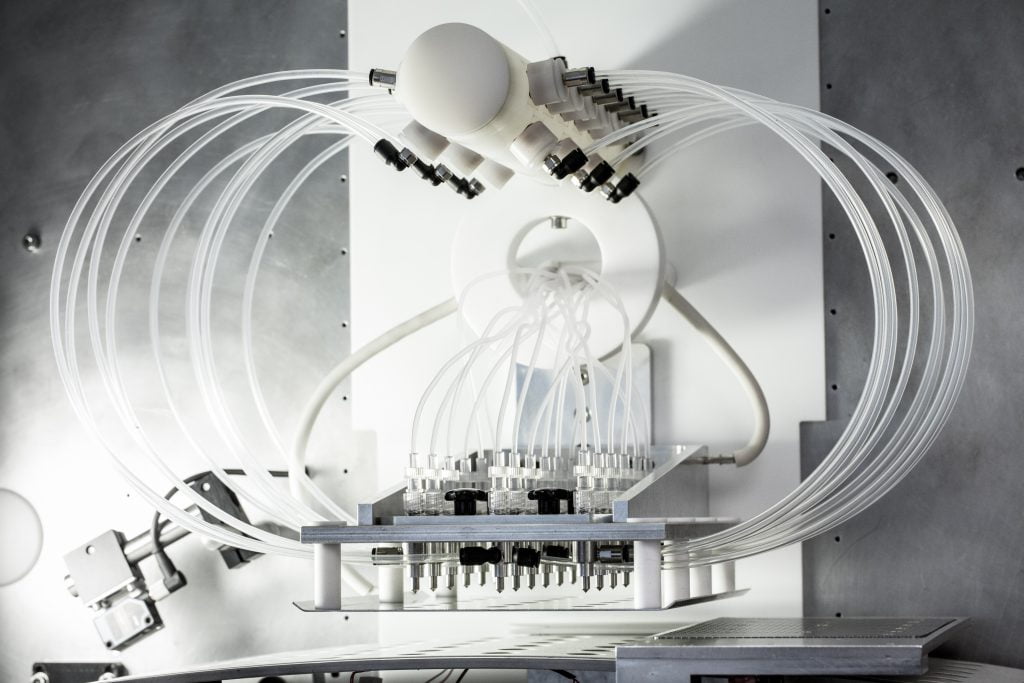
Looking Forward to Phase 3 Viaskin Peanut Studies
The purpose of PEPITES is to understand the efficacy and safety of Viaskin Peanut to induce tolerance to peanuts after 1 year. DBV has enrolled 356 patients, which will give them a larger group of study subjects to follow up on what they’ve learned from the phase 2 studies.
Readers have questions about how to manage localized reactions, the stickiness (or lack of stickiness) of the patches, etc. and DBV encourages current clinical trial patients to share their concerns and questions with their trial sites to help you. Current trial patients are helping to answer these questions as they accept some uncertainty and it’s much appreciated by DBV and the researchers. More information will be available after the studies are complete and pending regulatory approval.
They’ve recently began enrolling patients into a second phase 3 Viaskin Peanut trial, REALISE (REAL life use and safety of EPIT), will assess the use of Viaskin peanut in real life situations and evaluate safety after 6 months of treatment in children is a 6 months long safety study to understand how will the patch be used in real life situations. I’ve noticed that addition of a few local allergy clinics as research sites. Children are not required to have food challenges and there are few exclusions to the trial so that children with a history of severe reactions are allowed to participate.
DBV will wrap up their phase 3 studies, PEPITES and REALISE at the end of 2017 and then apply for the regulatory approval after analyzing all of their data. Patients who complete their respective trials may opt to enroll in follow up studies for a total of 3 years of treatment and those results will be shared after the patch goes to market.
More AAAAI 2017 Peanut Patch News: FARRP Data
Dr. Salmun disclosed that DBV paid for a study by Food Allergy Research and Resource Program (FARRP) because of FARRP’s extensive knowledge and data about minute amounts of allergens present in packaged foods due to cross-contact. They considered some packaged foods that people might eat, how much they might eat in one sitting, and what would be their risk of an allergic reaction due to cross contact of allergens.
Dr. Salmun used an example of ice cream as a food that is well liked that people might eat more than a suggested serving size. A hypothetical example might be that a serving ice cream might have 10 mg of peanut protein due to cross contact. Depending on one’s sensitivity, one might not react to 10 mg of trace amounts of peanut protein in one serving of ice cream (1/2 cup) with traces of peanuts in it. However if someone ate a more realistic and indulgent serving of ice cream (1 cup or more), then they could potentially be exposed to more trace allergens and experience a higher risk of a reaction depending on their tolerance threshold.
FARRP ran 5 million different simulations to determine the likelihood that someone might react. They came to the conclusion that if someone use immunotherapy to raise their threshold of tolerance to 1000 mg (or 300 mg if their initial tolerance ED were 10 mg or less) they potentially could reduce their risk of an allergic reaction to accidental cross-contact in packaged foods by 99%.
What about EGID?
I enjoy talking with Dr. Salmun but I knew that he made time to talk with me at a convenient time for me, which was around 8 pm in Paris, so we covered this section via email.
Will Viaskin be suitable for people with EGID?
Dr. Salmun: “Eosinophilic Gastritis Disorders (EGID) affect the GI tract and include eosinophilic esophagitis (EoE). We are currently studying Viaskin Milk in an investigator-sponsored proof-of-concept Phase IIa study for the treatment of milk-induced eosinophilic esophagitis, or EoE. The study is called SMILEE, and results are expected in the first half of 2018.”
I was intrigued by a presentation about experiments in peanut allergic piglets. Can you confirm if this summary is correct: Peanut sensitized pig[lets] were given peanuts for 10 days and confirmed EGID via scope (positive increase of IgE and moderate increase of EoG). Then they were treated with EPIT or Placebo for 3 months and then given peanuts for 10 days. Examination via pathology and endoscopy showed that EPIT treated piglets had a decrease of IgE and EoG counts.
Dr. Salmun: “Yes, the above summary is correct regarding the poster, but keep in mind that it was peanut-sensitized piglets (not pigs) and they were confirmed EoG by endoscopy (significant increase of IgE and moderate EoG). Regarding the results in EPIT-treated piglets, EoG and the gastric eosinophilic counts decreased significantly compared to placebo and IgE was significantly reduced compared to placebo.
Additionally, what connection can be made between animal studies and SMILEE?
We have seen encouraging preclinical results with Viaskin Milk in EoE and we look forward to results from SMILEE to see if these results can be replicated in humans.
Abstracts and Alphabet Soup
I majored in molecular biology as an undergraduate and I worked part-time as a lab research assistant. But despite my experience, sometimes reading abstracts seems like reading alphabet soup, maybe you can relate. Thank goodness for the doctors and researchers who are a 100X more knowledgeable.
Some of the presentations at AAAAI were about the various roles of the skin immune cells such as Langerhan cells, dendritic cells, and CD4+ FOXP3+ CD62L+ Tregs. I will admit that I literally called them “C-D-4-plus-Fox-P-3-plus-C-D-6-2-L-plus-T-reg” because I know that there is another cell “C-D-4-plus-Fox-P-3-plus-C-D-6-2-L-minus-T-reg.” I am sure there’s an easier way to “say” them but for now it’s alphabet soup!
I had 5 more minutes to speak with Dr. Salmun, so I asked one final question that I think will help us understand more about EPIT:
What are Treg cells and what do they do?
Dr. Salmun good-naturedly chuckled and said he could talk all day about Treg cells and very patiently gave me a big picture explanation. T cells are a type of lymphocytes (which is a subtype of white blood cells) that mediate the body’s immune response as a whole, including infections. There are Th1 (T helper type 1) and Th2 (T helper type 2) to respond to pathogens and allergens.
But when one has an excess of Th2 cells, that leads to a secretion of certain interleukin producing and IgE producing cells which stimulate an allergic reaction by creating more IgE. Tregs (regulatory T cells) act to block excess Th2 activity and may be good to have if we want to modulate the immune system to become less allergic.
When one applies a patch, the area under the patch becomes a little moist which makes the allergen soluble. Then the allergen is absorbed into the skin but never enters the bloodstream. The immune cells in the skin, langerhans cells capture the allergens and carry them to the lymph nodes, where they stimulate the immune system to have a more balanced response from Th1 and Treg cells. The current trials test whether we see the effects of EPIT induced Tregs in humans.
Thank you, Dr. Salmun and DBV Technologies for the incredible EPIT update and for the opportunity to speak with you and helping the food allergy community to understand more about the latest peanut patch news.
I try my best to explain what I read and hear as accurately as possible, I’m limited by not being a doctor or a researcher (remember “alphabet soup”?). Therefore I strongly encourage you to look at primary sources yourself, visit DBV’s website, read their press releases, watch the webcasts, read the results of the NIH trial, and discuss any specific questions with your doctor. If you know a peanut patch or milk patch patient, give them a hug and thank them for being so brave.
Sign Up for Emails from Nut Free Wok!
The best way to see every post or recipe is to subscribe to Nut Free Wok’s email subscription (be sure to respond to the confirmation email). I won’t send you spam or share your email address with anyone.

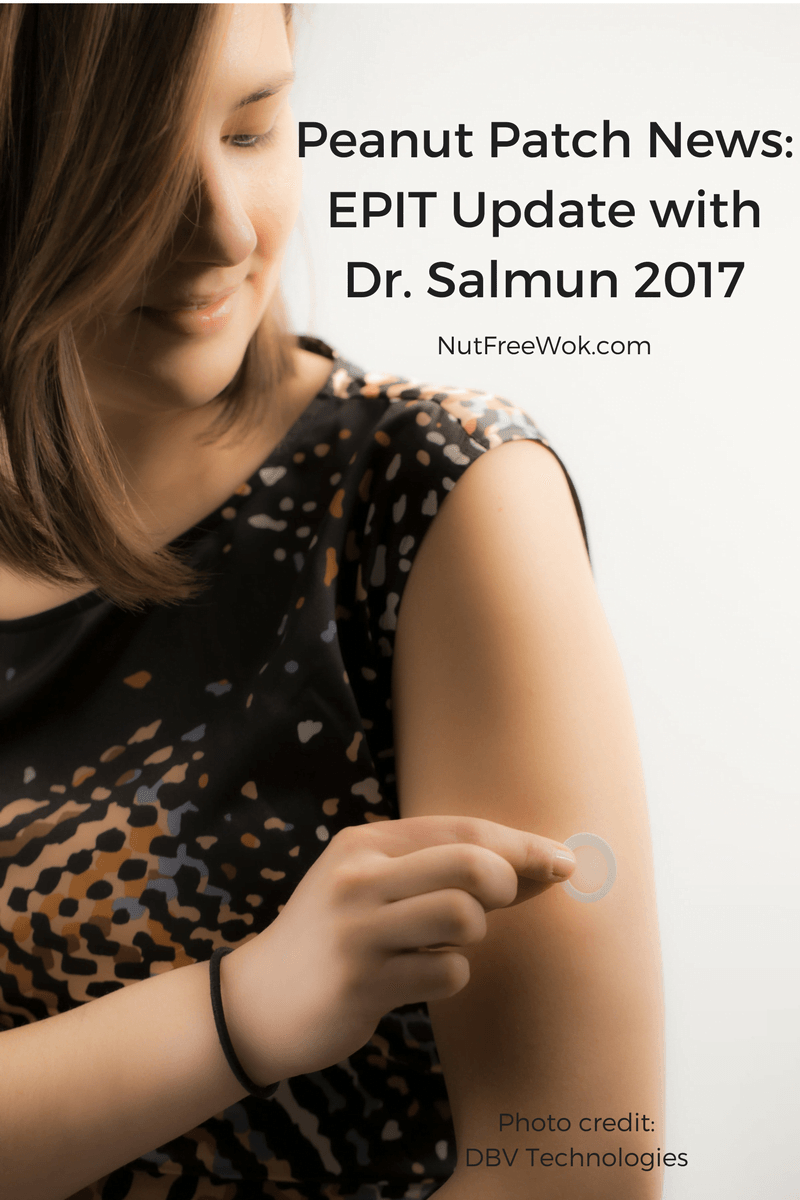
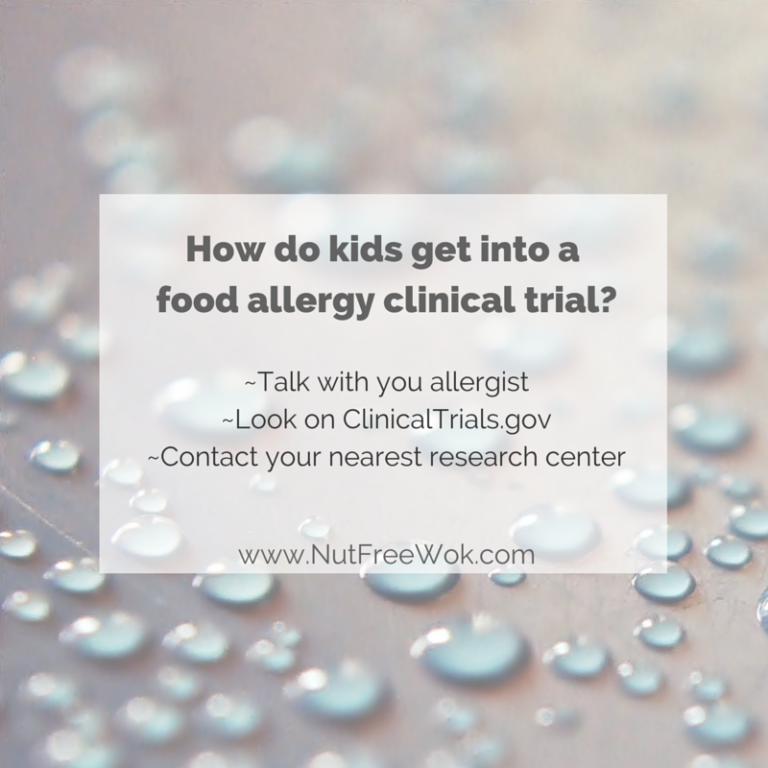
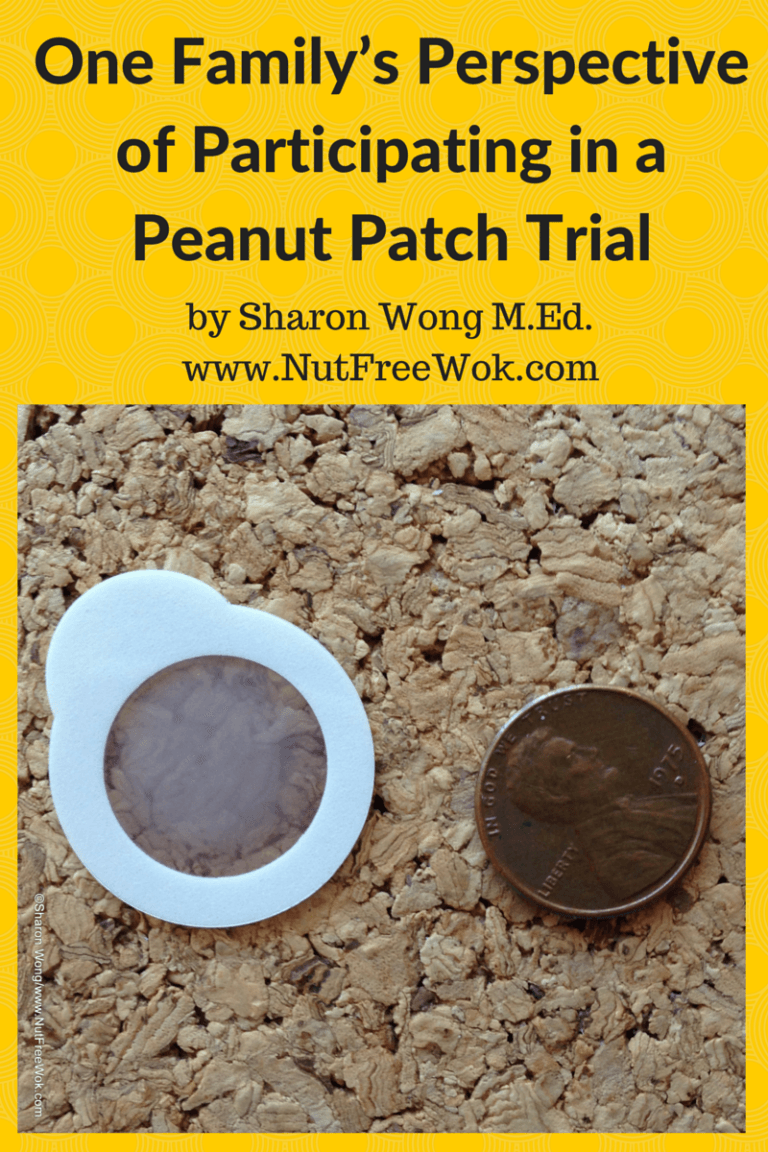
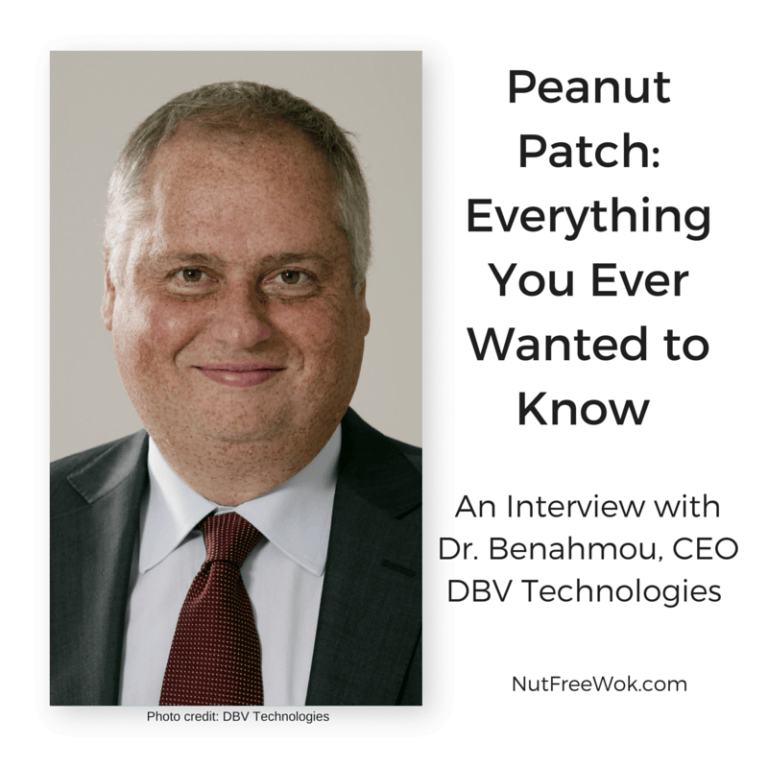
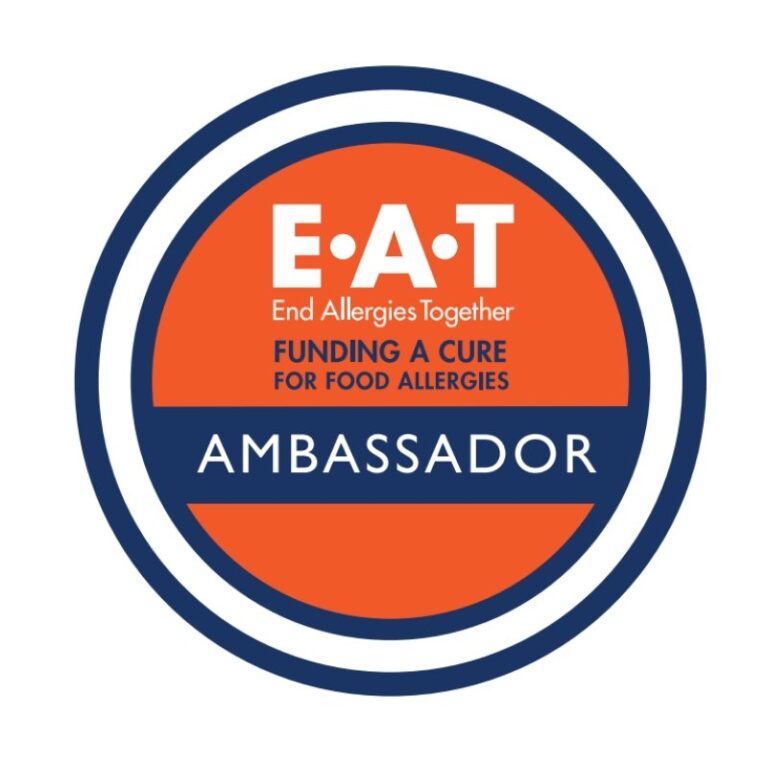
Sharon, this article is wonderful!
FYI – I remember reading and printing out your earlier article “One Families Perspective of Participating in a Peanut Patch Trial” I showed it to my husband and said “this is what we will do for our son” .That article gave me alot of hope and it’s big part of the reason I kept checking the clincal trials website and finally stumbling across the trail being done in Vancouver, you should know your articles are pretty rad and they helped us a lot! Thank you for taking the time to share your experience!
Tanya, thank you so much for taking the time to share your kind words. Food allergy research is so fascinating and I’m glad to share our experiences as well as my interviews with DBV. It’s quite a privilege. Good luck and best wishes for your son’s treatment!